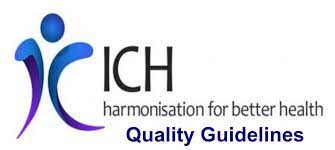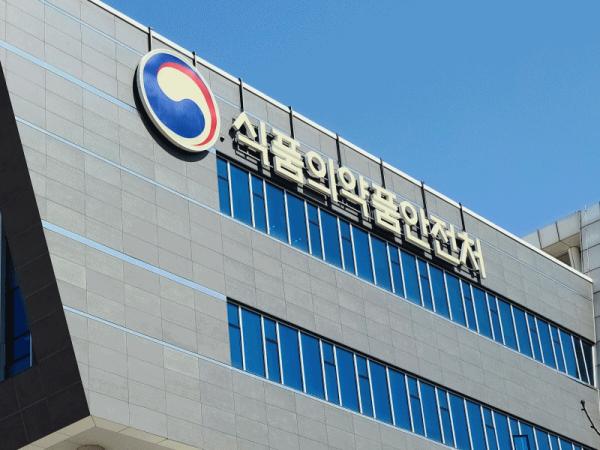ICH Q3E: Guideline for Extractables and Leachables (E&L)
-
Final Concept Paper
ICH Q3E: Guideline for Extractables and Leachables (E&L)
Dated 30 June 2020
Endorsed by the Management Committee on 10 July 2020
-

Type of Harmonisation Action Proposed
A new guideline on the assessment and control of extractables and leachables (E&L) is proposed. ICH has developed guidelines covering many aspects of impurities. This includes process and product related substances (Q3A, Q3B), residual solvents (Q3C) and new guidelines covering elemental (Q3D) and mutagenic (M7) impurities.
However, E&L impurities are excluded from the scope of the general ICH impurity guidelines. For the purpose of this document, “extractables” are any chemical entities that will extract from components of a manufacturing or packaging system into a solvent under forced conditions. This provides an effective worst case scenario in terms of what can migrate from a component. Knowledge of these extractables is important in identifying potential “leachables” that can migrate via contact withmanufacturing systems, container-closure systems, and drug delivery device components.
It is anticipated that the scope of such a guideline would include chemical, biological and biotechnicological products, including drugdevice combination drug products, however, it will not apply to medical devices as defined by the pertinent ISO guidance. It would also include all associated dosages forms and take into account the extracting/leaching conditions, the route of administration, drug indication and patient exposure.
Statement of the Perceived Problem
No internationally harmonized guidance on E&L assessment and control exists. Specifically, no international guidance that addresses multiple therapeutic modalities and dosage forms; includes identification, qualification, and reporting thresholds; addresses safety assessment; and aligns to the principles of science-based, risk-based and quality-by-design approaches is currently available. This current gap generates uncertainty for industry and regulators due to lack of clarity regarding E&L to meet regulatory expectations. The uncertainty creates potential delays in the approval of regulatory applications, and it can lead to variable interpretation. Ultimately, this may cause delays in the accessibility of medicines to patients. An ICH harmonized guideline addressing the gaps and inconsistencies would remove much uncertainty currently associated with this topic. Such a guideline would assist both applicants and regulators by providing focus on critical aspects, and improving transparency in requirements for medicinal products including drug delivery device components.
Issues to be Resolved
Lack of aligned E&L guidance framework: There is a current lack of alignment, consensus and clarity among existing guidelines, pharmacopoeial and other standards addressing E&L. This lack of alignment leads to variability in both application and interpretation of standards by industry and regulators. These differences with respect to key areas such as quality and safety assessment impact the global development of new medicines. Development of an ICH guideline provides a clear opportunity to harmonize current expectations covering all medicines, allowing clearer definition of scope and focus on critical quality and safety aspects.
Lack of guidance alignment regarding: the conduct of E&L studies; the design of an E&L control strategy based on science and risk-based principles; processes to address material and component selection and characterization; risk assessment; and lifecycle management (including post-approval changes) for container-closure systems, manufacturing systems, and drug delivery device components.
Thresholds: Development of harmonized thresholds for reporting and identifying E&L and qualifying leachables in context of route of administration, drug indication and patient exposure, with an emphasis on science-based and risk-based approaches. The guideline should seek to achieve an appropriate level of detail to ensure it remains relevant and applicable to future innovations in the long term.
Safety Assesment: Establishment of limits that are relevant to route of administration, drug indication and patient exposure. The guidance will clarify how prior knowledge may be considered to determine the need for further safety studies. Where additional safety data are needed, a common strategy for obtaining these data will be developed.
Control options: This would include options to mitigate and control process-derived leachables including considerations such as distance along the production stream and processing conditions analogous to ICH M7.
Alignment with existing ICH guidelines: The guideline would employ principles (e.g., control approaches) consistent with those described within other ICH impurities guidelines (Q3A-D, M7) to create a complementary guideline.
Pharmacopoeial standards: At present, although there are some pharmacopoeial standards relating to E&L, these are national or regional and generally not aligned across all Pharmacopeias. Development of a global E&L guidance framework would provide a key opportunity for pharmacopoeias to align.
Background to the Proposal
The variety of documents either directly or indirectly related to E&L issues are limited to specific regions and/or specific drug or manufacturing applications. Some packaging guidelines already exist [e.g., EC, Europe, FDA, United States], and some groups have produced recommendations for specific dosage forms [e.g., Product Quality Research Institute (PQRI)]. In addition, other recommendations exist as pharmacopoeial standards. Furthermore, indirect reference is made to leachables within ICH M7; although application of the guideline to leachables is not intended, safety risk assessment principles outlined therein (e.g., the threshold of toxicological concern [TTC]) may apply. ICH Q3D covers elemental impurities from processing equipment and container closure systems, and ISO 21726 discusses application of a TTC to leachables from devices.
Type of Expert Working Group and Resources
The Expert Working Group should be composed of experts with (bio)pharmaceutical quality, chemistry, manufacturing and control (CMC) and toxicology backgrounds familiar with the assessment and control of extractables and leachables.
Timing
It is expected that this project could be completed within the timeframe outlined in the business plan.
ICH Q3E 전문가위원회에 식약처 전문가 새롭게 참여
기자명 주형준 기자
입력 2023.07.06 16:15
-
식품의약품안전처는 국제 규제 조화가 필요한 새로운 가이드라인 등에 대해 논의하기 위해 지난 6월 10일에서 4일간 캐나다 밴쿠버에서 개최한 국제의약품규제조화위원회 상반기 정기 관리위원회와 총회 회의에 회원국 자격으로 참석했다.
이번 정기회의 후 7월 4일까지 의견 조회를 거쳐 식약처 전문가가 ICH Q3E 전문가위원회에 새롭게 참가하는 것이 정해졌다.
이는 지난 3월 식약처-미국 FDA 기관장 회담을 계기로 양국이 추진해온 의약품 불순물 관련 협력에 도움이 될 것으로 기대된다.
아울러 실사용증거, 실사용데이터 관련 신규 제안 지침에 식약처 가이드라인 내용을 반영하기 위해 적극 활동했다.
식약처는 앞으로도 ICH 위원회에서 활동을 주도해 규제 조화에 적극 참여하고 우리의 규제가 국제 기준이 될 수 있도록 최선을 다한다고 전했다.
원문 출처 : 메디컬프라임
ICH Q3E 전문가위원회에 식약처 전문가 새롭게 참여 < 의료정책 < 기사본문 - 메디컬프라임 (medicalprime.co.kr)
-

▲ 식품의약품안전처
-
식품의약품안전처는 국제 규제 조화가 필요한 새로운 가이드라인 등에 대해 논의하기 위해 지난 6월 10일에서 4일간 캐나다 밴쿠버에서 개최한 국제의약품규제조화위원회 상반기 정기 관리위원회와 총회 회의에 회원국 자격으로 참석했다.
이번 정기회의 후 7월 4일까지 의견 조회를 거쳐 식약처 전문가가 ICH Q3E 전문가위원회에 새롭게 참가하는 것이 정해졌다.
이는 지난 3월 식약처-미국 FDA 기관장 회담을 계기로 양국이 추진해온 의약품 불순물 관련 협력에 도움이 될 것으로 기대된다.
아울러 실사용증거, 실사용데이터 관련 신규 제안 지침에 식약처 가이드라인 내용을 반영하기 위해 적극 활동했다.
식약처는 앞으로도 ICH 위원회에서 활동을 주도해 규제 조화에 적극 참여하고 우리의 규제가 국제 기준이 될 수 있도록 최선을 다한다고 전했다.
원문 출처 : 메디컬프라임
ICH Q3E 전문가위원회에 식약처 전문가 새롭게 참여 < 의료정책 < 기사본문 - 메디컬프라임 (medicalprime.co.kr) -

▲ 식품의약품안전처